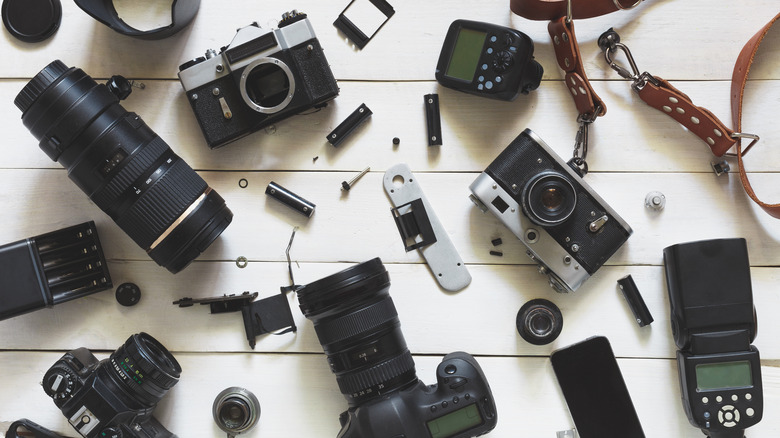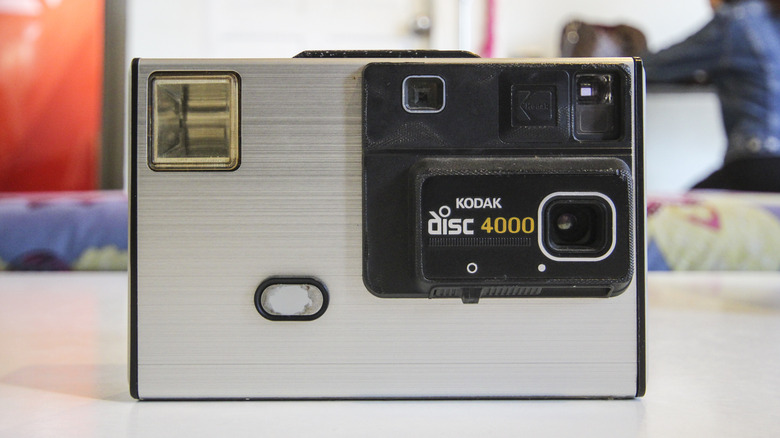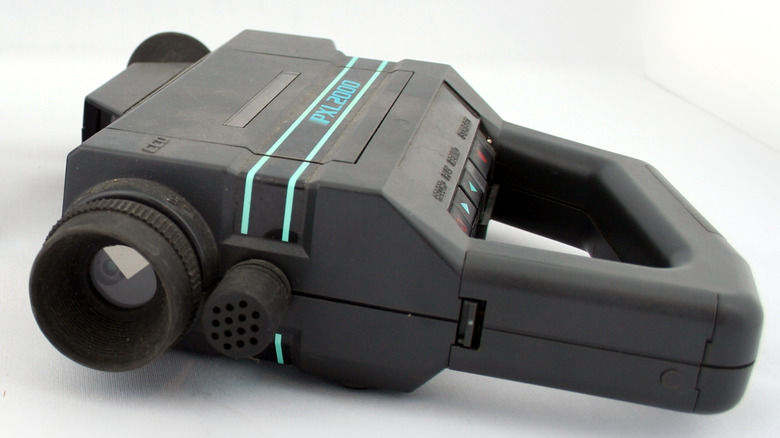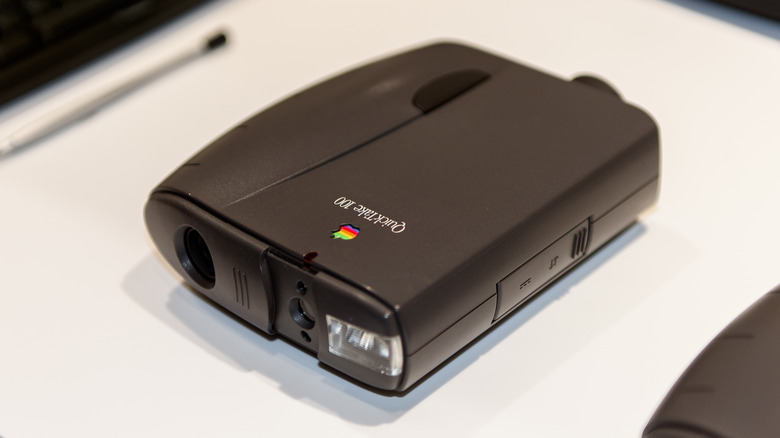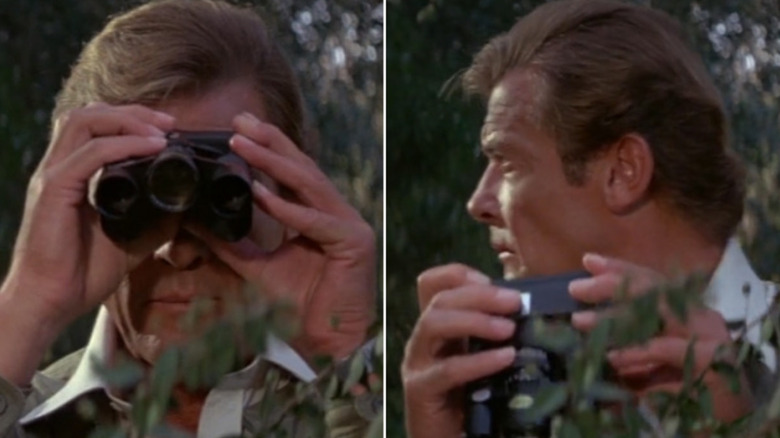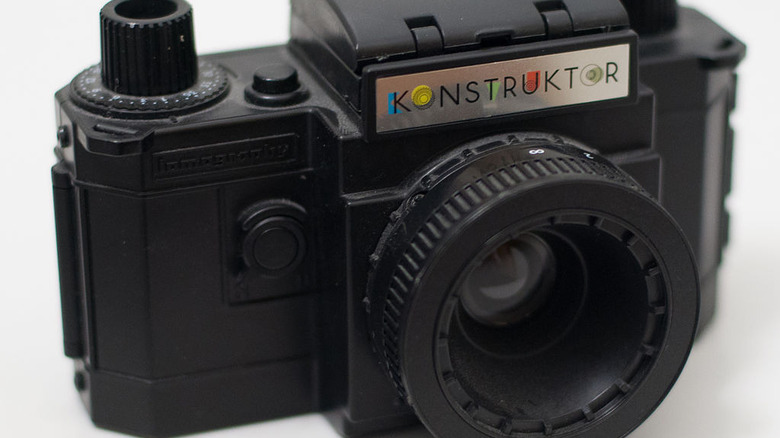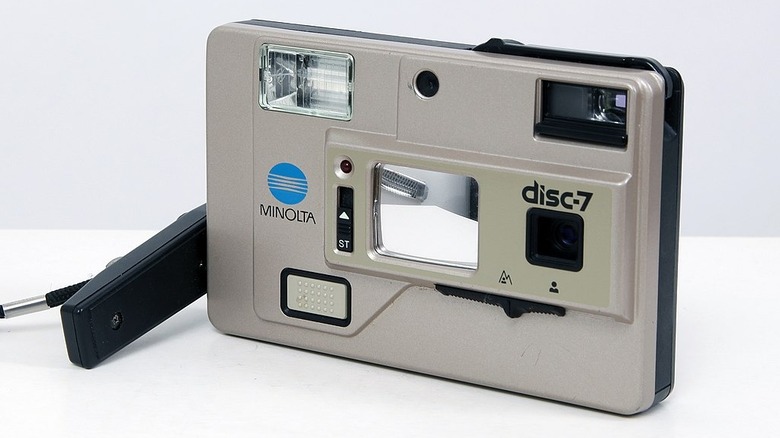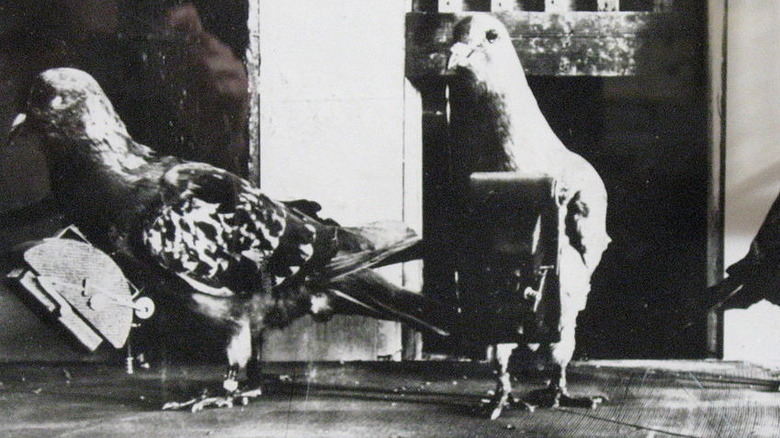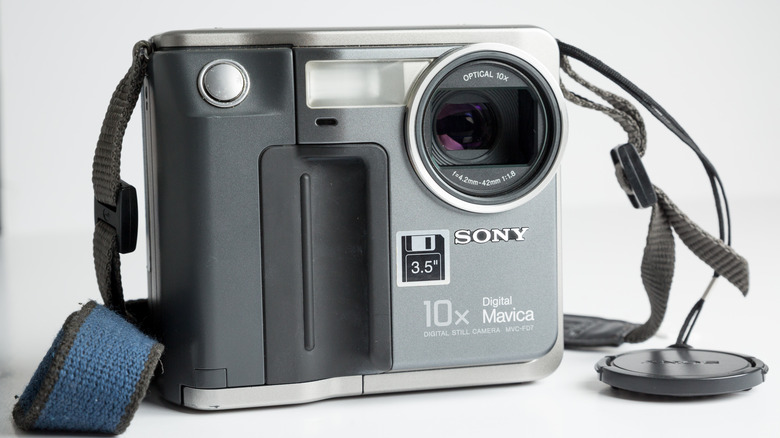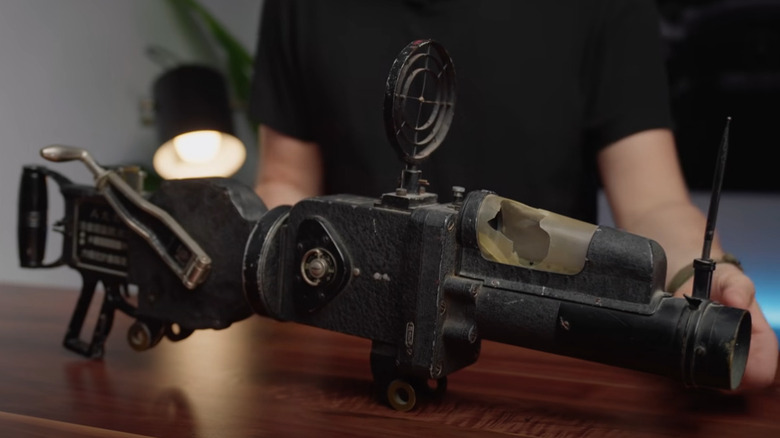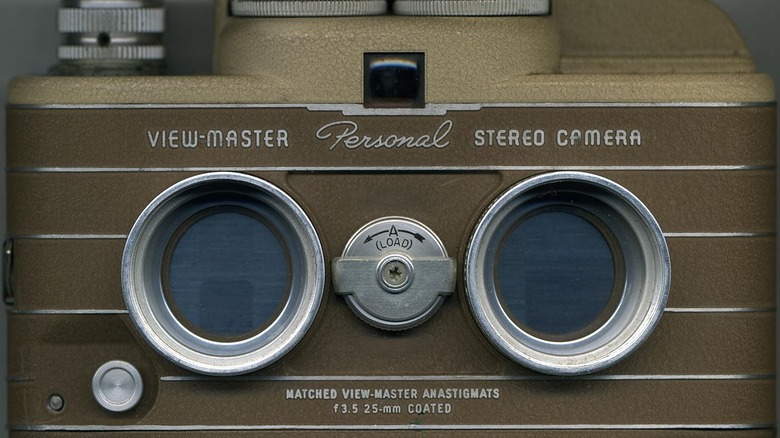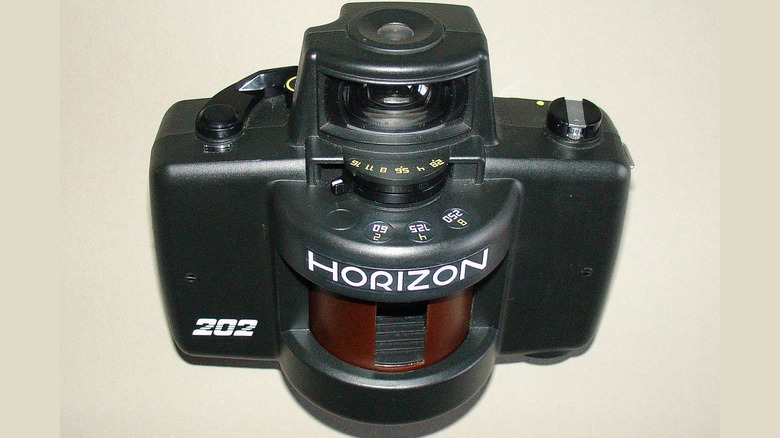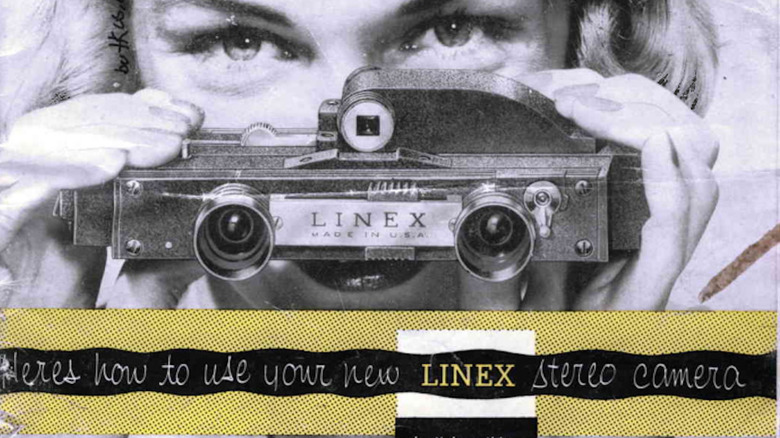12 Bizarre Cameras You Forgot Existed
Photography is among the greatest inventions of the 19th Century and it provides a detailed window into the past. In the past 200 or so years, the art of photography has changed and developed in immeasurable ways. So too has photography equipment changed in that time. From daguerreotypes to digital HD imagery, the types of cameras are as varied as flowers in a field.
Many of the camera formats created in past years have stuck with us until today. The 35mm SLR film camera is still in use today by professionals and hobbyists, however, the basic form and layout of it have carried forward to the digital version, the DSLR. Many digital point-and-shoot cameras mimic designs of the past as well. Still, dozens of oddball cameras have shown up in the odd corners of the world with sometimes equally odd photographic results. Some strange photo devices are still highly useful and maybe even desirable. Looking over this long history of capturing the images of our world, here are 12 cameras you just may have forgotten existed.
Kodak Disc
A lot of great stuff came out of the '80s. We got Pastel clothing, Rick Astley, the movie War Games, synthesizers, and the Kodak Disc camera. While 35mm film remained the standard for most amateur and professional photography, camera makers tried many ways to make the photography for the amateur easy. Ease of use was the reason for the Disc camera.
Instead of having a canister with a roll of film, the Kodak Disc used a cartridge loaded with a round piece of film material and rotated inside the camera. The result was a very simple loading process and a compact camera that fits easily in a pocket or purse. However, the film format was very small and resulted in developed pictures that were grainy and of poor quality. Retroist points out the continued problems of poor image quality can be contributed to film processors using existing equipment to develop film rather than utilizing specialized equipment for the disc film that would have yielded better results. Regardless, The Democrat & Chronicle claims that the combination of poor image quality and rising popularity of 35mm cameras likely led to the demise of the Disc format.
The Disc camera was made by Kodak first and others later but all of them went away toward the end of the 80s. It was a product with seemingly good intentions that failed to deliver an appreciable benefit and slowly faded away into obscurity.
Fisher-Price PXL 2000
Home movie and video recording have been popular ever since the first compact film camera became available. This popularity gained steam with the advent of magnetic tape video recording. But with the expense of video equipment, young aspiring film directors can get left out. Fisher-Price attempted to rectify this situation with the PXL 2000 in the late 80s.
The PXL was a black and white video camera that was recorded on common audio cassette tapes. To produce a moving image, it moved the tape at a high rate of speed compared to an audiotape. Still, the limitation of the tape meant that the image captured was small, without color, and extremely grainy. However, for youth just getting to experiment with video recording, this was good enough. Then again, because of the fast-moving cassette mechanism, the batteries discharged quickly. Popular Mechanics noted that recording two hours of video required the depletion of 72 double-A batteries. The need to constantly resupply fresh batteries could be the biggest reason for its downfall as every kid knows that nagging mom and dad for batteries all the time rarely bear fruit.
The PXL was essentially a novelty. SlashGear previously reported on modern users adapting it to create videos with a specific lo-fi aesthetic. But for kids exploring the creative world of video, it was likely a cherished piece of equipment that may have spurred many of the famous movie makers we love today.
Apple Quicktake 100
Apple was not the first to create a digital camera but they may have been the first to market one for sale to the public. It doesn't matter much, though, as it was not a success.
In 1994, photography was very much analog, with the only digital components being the controls on advanced film cameras. And because the technology of computers was still very much developing and in its infancy, the capabilities of the Quicktake are limited, making its usefulness marginal. The highest resolution possible was 640x480 and allows for only eight pictures before using up all of its 1 MB of storage. If reducing the resolution to a paltry 320x240, one could get up to 32 photos before running out of space. There was no LCD to preview the photos, and only after loading the pictures via serial cable onto a Macintosh computer could the photographer see how they turned out (via: Rocket Yard).
At $749 in 1994 dollars, it was very expensive. The limited ability to take small, low-resolution photos made it worthless for any professional application. Even at the higher resolution, the pictures produced would have been inferior to use in print media or any other kind of publishing of the day. The Quicktake stands today as a stepping stone on the path toward the dominance of digital cameras.
Tasco 7900 Bino/Cam
While they are available today for purchase from resellers on eBay, not much information can be found about the Tasco 7900 Bino/Cam. However, just seeing pictures of it can tell a lot and it is evident what a novel concept it was.
Tasco is a long-time manufacturer of binoculars, and they make some of the best binoculars on sale today. It appears in the late 70s, Tasco added a camera to one of their models of binoculars. Attached to the frame is a small camera using a 110 film cartridge, a popular film format for amateur photographers for many years. Many family snapshots were taken on cheap, compact 110 cameras back then. It was s novel idea to include it on the binoculars, and somewhat surprising it did not catch on. The ability to capture an image while looking through your binoculars seems like it could be very desirable.
A writer for Tech Radar claims in a review of his own Bino/Cam that it was made in 1977 and featured in the James Bond flick "For Your Eyes Only," an appropriate use of such a device. The lack of modern Bino/Cams suggests the feature failed to be significantly useful, and so the concept shall remain a curiosity from the past.
Lomography Konstructor
Available for purchase brand new today, the Lomography Konstructor is a mostly pointless but fun package for those who like to build. Sold as a kit that resembles that of a model car more than anything, the Konstructor is purely a hobbyist affair and a novelty rather than a serious camera. That said, it is capable of shooting photos on 35mm film, and is fairly adept at doing so, considering the price of entry of just $35.
In a review by The Verge, the Konstructor is said to be fairly straightforward to build, but not without its pitfalls. The construction is fairly solid, and the picture results are comparable to any other low-end 35mm camera. That means you sill throw out several before finding some keepers. This is a true SLR camera, which is impressive considering its DIY nature. Overall, it would be a fun afternoon project for anyone who likes weird camera-related projects.
Minolta Disc-7
Many think the idea of selfies and using selfie sticks is a modern thing. But, as is often the case, new ideas have older roots. Kodak introduced the Disc film format but was not the only company to manufacture either the film or the camera. Minolta released several models of disc cameras in the 80s, including the Disc-7. What made it unique is the inclusion of the selfie stick a full 20+ years before smartphones started being brandished on sticks by teens everywhere.
The Disc-7 had a stick attached to the side that could be extended such that you could hold it up just like is done with modern cell phones. This is an apt correlation as the disc camera is roughly the same size and shape as a modern mobile phone. However, as there is no front or rear-facing screen, the camera has a convex mirror next to the lens to give make it possible to frame the shot accurately. Since the Disc camera is a fully automatic, focus-free device, all one needed to do to take a picture is to press the button on the end of the stick. Not a lot of info remains available, but this fan wiki lists it's less than impressive stats and another collector site shows it can be bought for a meager sum. Even as a collectible it has a limited purpose as Disc film has been out of production for decades by now.
Pigeon Camera
To obtain overhead views of an area, often called an aerial view, the modern age is flush with options. We can use planes, helicopters, satellites, and drones to get aerial pictures and video. But this was not always the case. Since photography predates aviation, aerial views were hard to come by in the early age of photography.
One ingenious concept to get photos from above was to use homing pigeons with a specially modified camera. This shows the concept of a modern drone having roots many decades in the past. One key difference is a drone requires no training or food. Homing pigeons have been used on battlefields for centuries to pass messages between commanders. These pigeons equipped with cameras can provide valuable reconnaissance for a commander to make battle plans. According to reports from a 1908 Technical World Magazine Testing specialized cameras with pigeons immediately drew the interest of the German military. An ingenious mechanism is described that makes possible the collection of several photographs In 1932, Popular Mechanics, gave the pigeon cameras a mention, saying they could click off up to 200 photos per flight.
As technology progresses, we often find what is old is new again. However, just as 35mm photography makes a resurgence, I do not see pigeons replacing, or even supplementing, drone photography any time soon.
Sony Mavica FD5
The changeover from film photography to digital meant a great many things involving photography changed. With film photography, images are captured on film and processed onto photo paper that could then be stored in an envelope, album, or the bottom of grandma's dresser drawer. That is pretty much how photographs were treated for the better part of a decade.
Sony's ingenious design to use a standard storage format that was readily available and easily transferred between computers showed up in its Mavica camera line. The Mavica FD5, released along with the FD7, was the first of the Mavica line to store photos on a 3.5-inch floppy disk. In the late 90s, floppy disks were ubiquitous and cheap.
While the specs of the 1997 Mavica are lousy by today's standards, it was successful. CameraLab notes in its retro review that it was the first all the original price was about $600 in 1997 money and that it took a full 10 seconds to write the image onto disk. Floppy drives proved to be reliable storage devices but were never particularly fast. Furthermore, floppy disks are only capable of storing 1.44 MB of data and that makes them woefully inadequate for modern photography. The available space was adequate for the time, with a single disk soring up to 40 0.3 MP images, per PetaPixel. It could never compete with professional film cameras of the day, but it gave hobbyists a new way to approach photography in the digital age.
Konishiroku Rokuoh-Sha Type 89
The process of taking a photograph has long been known as "shooting" a picture. It should come as no surprise, then, that someone would take this to its logical conclusion and create a camera that represents a gun as much as any device for photography.
Created by Konishiroku, the predecessor of the modern Konica company, the Type 89 was used by the Japanese navy for training purposes. According to the Spanish photography museum, Foticos collection, the gun was made in such a way that it not only resembled a fighter plane machine gun but was installed in the place of one. The pilots ran training missions in the infamous Mitsubishi Zero fighter plane and pulled the trigger of the Type 89 camera when locking onto training targets. The film could later be developed to discover the pilot's accuracy. It is an ingenious application in an age long before computer modeling and running of hypothetical tactical simulations was much more difficult.
Some of these cameras were brought back to the United States by American military service members as trophies of war, such as this one shown by HistoCam. Well preserved examples can still be bought from dealers in militaria, such as this one from International Military Antiques.
View-Master Stereo
Almost every kid in the U.S. has played with or owned a View-Master at some point in their life. It is one of the toys so ubiquitous that it reaches across socioeconomic lines as well as generations from the post-war world up until today. It is iconic and enduring, a symbol of American ingenuity and industry. But most of all, they are fun. They give the viewer a 3D perspective of the far-off worlds of national parks and tourist hotspots or the fantastical worlds of animations and moving pictures.
For a short time in the mid-1950s, it was possible to turn that fun back on yourself and make it personal with the View-Master Stereo, a camera that could take pictures meant for the wheel of a View-Master viewer. Using 35mm film, the Stereo lined up 2 fixed-focus lenses to take 2 photos simultaneously with just enough offset to produce the classic View-Master 3D effect. The camera used standard 35mm rolls of film and functioned similarly to other point-and-shoot cameras of the day. The film had to be cut in a process unique to the View-Master and loaded up into the circular wheels for the viewer (via: View-Master UK).
The View-Master stereo is a unique companion to the viewer, however, it was short-lived. The lack of practical application and the added complexity of developing likely led to its decline. Today they are collectible by a niche market of View-Master collectors.
Horizon Panoramic
The Soviet era gave us many industries that developed parallel tracks on both sides of the Iron Curtain. While simultaneous advancements happened in aerospace, defense, and electronics, photography went down a similar path. Photography equipment from countries aligned with the West is likely to have been of greater quality and more refined, however, that does not mean everything from the USSR was complete garbage. One unique panoramic camera that originated in the Soviet Union is still manufactured today, The Horizon.
The Horizon sets itself apart from most panoramic cameras in the way it captures the field of view onto film. While most cameras use an extremely wide field of view by using a wide-angle lens, the Horizon uses a swing lens in which the lens rotates within a drum to capture the wide view. Not only is it a unique method for panoramic photography, but it also gives the camera a distinctive look, unmistakable for anything else (via: Alfred Klomp).
This Russian-made camera has roots in the Soviet Union but is still manufactured today. It is distributed by Lomography, a company known for making hobby and toy cameras. While it comes from a low-end camera producer, the Horizon is not cheap, with most models priced around $300.
Lionel Linex
Lionel has long been a leader in the manufacture of model trains. The company is so ubiquitous and so synonymous with model trains, most people have heard of it. Lionel also, for a time, produced a camera. The camera met limited success, having been produced for only 3 years, yet remains collectible to this day.
The man who founded Lionel Trains was first awarded a patent for a remote-triggered flash device for cameras in 1899, several years before the train business existed. But, Lionel founder, Joshua Cowen, received a stereoscopic camera in 1949 as a gift as was disappointed by the quality and complexity of the device. Being an inventive and successful manufacturer himself, Cowen set out to build a better camera. What he built was an all-metal construction camera that utilized a film cartridge that made for easy loading and usage. While creating a proprietary cartridge could make the camera easy to use, it is possibly the reason for its commercial failure. The Linex camera only sold about 85,000 units from 1953 to 1955.
While the camera did not find great success when it was new, it can be desirable to some collectors today. Possibly because of the name associated with trains, certain train aficionados are eager to have a specimen. Model trains are some of the most collectible toys made and nice examples of the camera sell for around $200 today.
